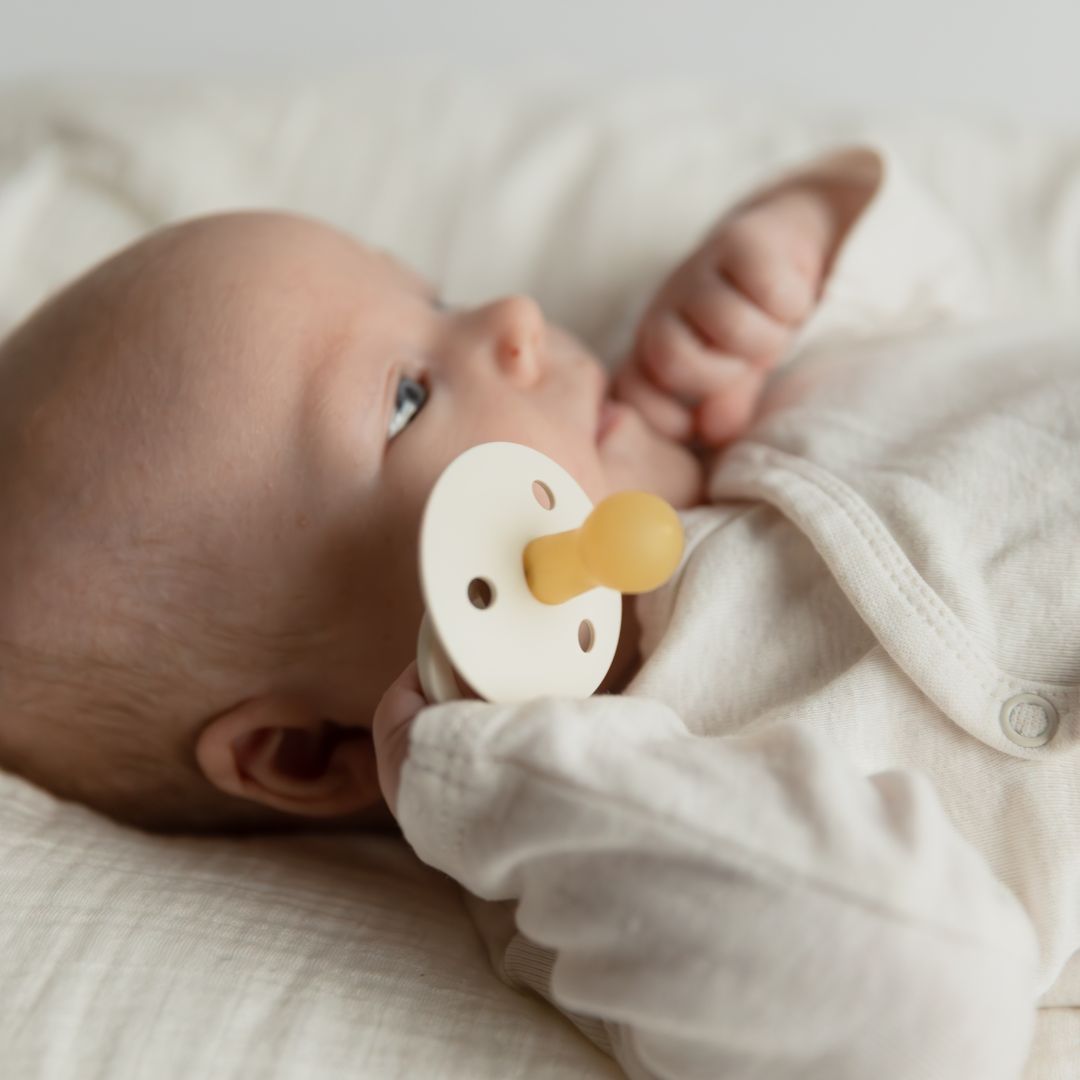The journey of parenthood is filled with countless milestones, each marked by its unique set of challenges and joys. One of those moments that can both melt your heart and keep you up at night is your baby's teething phase. As those tiny teeth begin to make their debut, your little one's gums might become sore and tender, causing discomfort and fussiness. In this blog post, we're here to guide you through the world of teething and offer tips and tricks to help ease your baby's discomfort.
What is teething?
Teething is the process by which the baby’s teeth emerge through the gums. During teething, the teeth gradually break through the gums, causing discomfort, redness, light swelling, and sometimes pain for the baby. The baby might also have a light temperature rise.
When do babies start teething?
When it comes to teething, all babies are different. Some babies start teething before they are 4 months old, and some after 12 months. But most babies start teething at around 6 months.
Teething symptoms
Baby teeth sometimes emerge with no pain or discomfort at all. At other times, it affects the child a lot. The most common teething symptoms are:
- Excessive Drooling: Increased saliva production is a classic sign of teething. You may notice your baby drooling more than usual.
- Swollen Gums: The gums around the erupting teeth may appear red, swollen, and tender.
- Flush and Rash: Teething can cause a flushed cheek or rash on the face or the bottom.
- Sleep Disturbances: Teething pain can disrupt your baby's sleep patterns, leading to more frequent nighttime awakenings.
- Irritability: Teething can be uncomfortable, leading to fussiness, crankiness, and general irritability in your baby.
- Chewing and Biting: Babies often seek relief by gnawing on objects, fingers, or toys to massage their sore gums.
- Loss of Appetite: The discomfort of teething can make some babies less interested in feeding. They may temporarily lose their appetite.
- Mild Fever: Occasionally, teething can cause a slight increase in body temperature, but it should not be a high fever. If it is, consult your pediatrician.
What order do baby teeth appear in?

- The lower central incisors – bottom front teeth – are usually the first to come through at around 6 to 8 months.
- Then the upper central incisors come – top front teeth. These tend to come through at about 8 to 13 months.
- Then the upper lateral incisors come – the side top front teeth – around 8 to 16 months.
- Then the lower lateral incisors come – the side bottom front teeth – around 10 to 16 months.
- The first molars – back teeth – come through at around 16 to 23 months.
- The canines come through at around 13 to 19 months.
- And the second molars come around 23 to 33 months.
- Most children will have all their baby teeth by the time they are between 2 and 3 years old.
What can parents do to help relieve teething discomfort?
Teething toys are something your baby can chew on safely. And these may ease their discomfort and distract them from any pain. Find some with textures to help reduce itching and some that can be cooled in the fridge. Never cool teething toys in the freezer; it will be too cold for the baby’s mouth.
The cold can help to soothe your baby's gums. If your baby is six months or older, you can also give them healthy things to chew on, such as soft fruit and vegetables. Remember always to watch when your baby is eating in case they choke.
Gum gel is also available at pharmacies, which helps reduce gum pain and redness. Choose a gel with natural ingredients that can be applied to the gums, for example, after meals and before the baby goes to sleep.
Caring for baby’s first teeth
Once the first baby teeth have erupted and are visible through the gums, it's time to start cleaning them. It's convenient to clean your baby's teeth with a soft silicone finger toothbrush. In the very beginning, there's no need to use toothpaste, but once the baby has their back teeth, apply a rice-sized amount of toothpaste on the toothbrush. Use fluoride toothpaste specifically designed for babies aged 0-3 years.
Brush the teeth twice a day. Choose a time when the baby is in a good mood and make toothbrushing a pleasant part of your daily routine.
Smart products to ease teething
 |
Filibabba silicone teether ringsTeethers are designed with exciting textures and shapes that stimulate both mouth and hands. The ring shape with texture makes it easy for the baby to grab and hold the ring. For extra relief, you can cool the teethers in the fridge (never the freezer). Available in a handy 2-pack. |
 |
Filibabba teethers - Cooling starA star-shaped cooling teether filled with water and with an easy grip for small hands. Just put the stars in the fridge (never the freezer) and use them to soothe the baby's sore gums. With a 2-pack, you'll always have one ready. Small bell inside helps develop fine motor skills and hearing. |
 |
BIBS teethersThe teether has various textures which provide soothing comfort and help stimulate the eruption of a baby’s itchy gums perfect for teeth relief. |
 |
Bebe Bonchic Finger ToothbrushThis soft silicone toothbrush offers a gentle yet effective way to care for your baby's oral hygiene. The bristles massage the gums, providing comfort while cleaning your baby's first teeth. It's perfect for starting a healthy brushing routine early. |
 |
Bebe Bonchic Fruit FeederThe fruit feeder is perfect for introducing fresh fruit and vegetables to your little one without the risk of larger pieces. For an added cooling effect, place cold fruit inside—ideal for soothing your baby’s sore gums during teething. It also features a silicone handle that’s comfortable to grip and chew. Using the fruit feeder promotes oral muscle development and encourages chewing skills, contributing to healthy dental growth. |
 |
BÉABA Pre-SpoonsThis pre-spoon also functions as a teether, with textured tips that soothe gums. Ideal for teething babies from 4 months, it has an easy-to-grip handle for exploring food. Made of gentle silicone, its symmetrical design works for both hands. From 6/8 months, babies can use it independently to gain self-feeding skills. |
 |
Bandana BibA fabric bandana bib is a stylish and practical accessory that keeps your baby’s clothes clean and during feeding and protects against drool during teething. Made from soft, absorbent material, with multiple layers, it also helps prevent skin irritation by keeping your baby's neck and chest dry. It features easy snap closures, making it simple to use and change when needed. |
See all teethers






